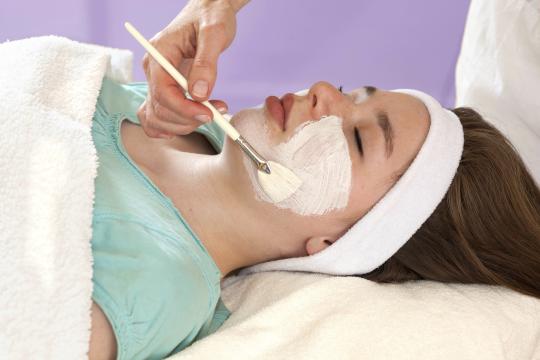
Aging happens. And eventually we all reach a point when no amount of at-home skincare or h-y-d-r-a-t-i-o-n can deliver the same filtered-selfie glow that we're pining for. Which brings us to Part 2 of our series exploring the wondrous world of chemical peel treatments. So let's jump right back in where we left off in Part 1 , and head straight to the real deal on medium strength chemical peels.
Medium Chemical Peels:
The reality of aging skin is that when it comes time for treatment, there are degrees that must be adhered too. We're going to lean heavy on the drama here, but once you're past the "point of no return," a light chemical peel isn't going to deliver the results you're hoping for. And even if you're not in the advanced stages of aging, you might be wandering around in that no man's land beyond the beginning stages, where a light chemical peel isn't going to cut it. (Although patients with sensitive skin can see a cumulative visual benefit from multiple light chemical peel treatments.)
Medium strength chemical peels are typically comprised of either 35%+ trichloracetic (TCA) acid or 75%+ of the aforementioned Glycolic Acid (75+%). These peels are geared toward addressing more pronounced facial aging like hyper-pigmentation, lines and wrinkles, mild skin imperfections, age spots, melanoma and acne. And while all that sounds dandy, medium strength chemical peels are more powerful than their lighter counterpart. You can expect a bit more redness (like a sunburn), possible swelling and itching, flaking and dryness—most of which can be circumvented with proper pre- and post- treatment care. There may be some peeling of the upper dermal layer too. The actual process can be made more comfortable if your doctor uses a numbing agent, but typically, a medium chemical peel shouldn’t be too unbearable or inconvenient. And with minimal downtime, this treatment offers a lot of anti-aging benefit with minimal drawbacks.
Deep Chemical Peels:
And then we get to the Queen Bee of chemical peels—the deep chemical peel. There are two types of deep chemical peels—phenol peels and croton oil peels. Both are serious procedures that should only be performed by a qualified and board-certified plastic surgeon. Deep chemical peels are best suited to treat severe wrinkles and lines, excessive sun damage and acne scarring, other serious skin imperfections and dark spots. They're even used to treat certain precancerous conditions. Phenol peels produce a burning sensation that is somewhat cooled as the solution itself can act as an anesthetic, but it will be considerably more sensitive than if you've had a light or medium chemical peel. Another thing to consider is that phenol peels can cause skin discoloration, so chat with your doctor about this too. Croton oil peels require intravenous sedation or general anesthesia… ‘cause... they hurt. The bonus with the croton oil peel is that most patients wake up the next morning pain-free. It's important to talk about all of the potential risks and side effects with your surgeon, ensuring that you have completely grasped all the variables you need to consider before undergoing a deep chemical peel. Your surgeon is always the best resource for choosing what type of peel might be right for you.
Side effects of the deep chemical peel can include redness, swelling, temporarily increased pore size, blisters even—that might ooze as they break open. *ew. And if that doesn’t sound “a-peel-ing” enough, just wait ’til we tell you what happens next. (See what we did there? *wink.) The skin will then begin to crust over and peel off—and that process will take some time. Suffice it to say you won’t be rushing back out in public immediately after your treatment. Doctors advise 5-14 days downtime for deep peels, as well as avoiding sun exposure, makeup and sunblock for a couple of days. As with all serious procedures, your recovery will be dependent on your own propensity towards healing and your adherence to your surgeon’s instructions. With the deep chemical peel, cool compresses can help with any discomfort, and your doctor will advise a special lotion or ointment to apply as necessary. You may also be asked to take an antiviral medication—if that's the case... take it.
Patients who’ve undergone deep chemical peels and closely followed all of their doctor’s pre- and post-procedure directions, find the whole process much less dramatic than we're painting it here (#dramaqueen), and end up being very pleased with their results. So if you're looking for a treatment that can rejuvenate the skin and treat more advanced skin issues and signs of aging, a consult with your board-certified plastic surgeon will help you decide if a chemical peel might be right for you.







